Japandi is a blend of Japanese and Scandinavian décor that has become a big hit in interior design. This style is all about keeping things simple and natural, using soft colors and materials that bring a sense of calm. In 2024, Japandi is not just a passing trend but a growing favorite among people who want their homes to feel modern and cozy.
This guide will provide sellers with a comprehensive understanding of this trend. It will also offer insights and strategies to effectively source and integrate Japandi-inspired decor into their inventories to capitalize on its popularity.
Table of Contents
Japandi decor market analysis
Strategic approaches for sourcing Japandi décor
7 top Japandi decor trends in 2024
Conclusion
Japandi decor market analysis
Japandi décor has emerged as a rising segment within the broader home décor market. The global home decor market was valued at US $634.2 billion in 2022 and is projected to reach US $845.8 billion by 2030, growing at a compound annual growth rate (CAGR) of 3.0% from 2023 to 2030. This growth reflects shifting consumer preferences and better-emerging design trends, such as Japandi decor.
Key trends influencing the rise of Japandi style
The growing popularity of the Japandi style in interior design is shaped by several key trends, each reflecting broader shifts in modern consumer preferences and lifestyle aspirations. Some of these trends include:
- Embracing minimalism: Japandi’s minimalist approach resonates strongly in today’s market, where simplicity and uncluttered spaces have become popular. This style offers a tranquil and ordered aesthetic, appealing to those seeking to create calm and harmony in their homes.
- Focus on functionality: Japandi style goes beyond surface aesthetics by emphasizing functionality. For instance, in urban environments where space can be limited, this décor’s multi-functional and space-efficient designs offer smart solutions, blending style with practical living.
- Sustainability and eco-friendly materials: At the heart of the Japandi style is a commitment to sustainability, which aligns with the increasing consumer awareness of environmental issues. The use of eco-friendly and natural materials in Japandi decor not only speaks to an aesthetic preference but also reflects a growing desire among consumers to make environmentally responsible choices.
- Aesthetic of tranquility and nature: The tranquil and nature-inspired aesthetic of the Japandi style meets the contemporary desire to incorporate elements of the natural world into interior spaces. In a time where urban living can feel disconnected from nature, Japandi decor brings a touch of the natural world indoors, creating spaces that are not only beautiful but also offer a sense of connection to the outdoors.
Strategic approaches for sourcing Japandi décor
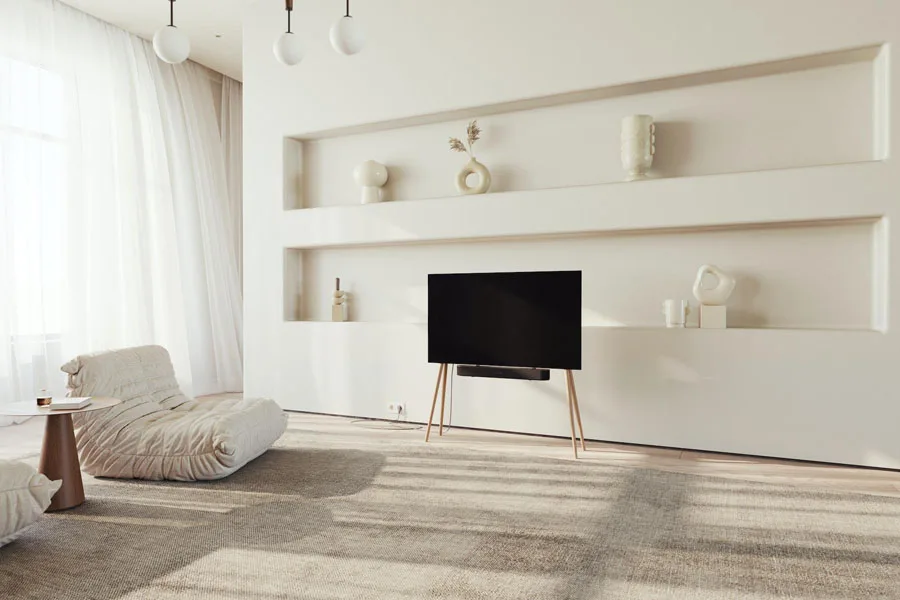
Market research and consumer insights
Targeted market research helps you identify the specific preferences and demands of customers interested in Japandi décor. You can then analyze the current trends in the market and assess how they align with consumer buying patterns. This understanding will come in handy to guide you when curating an inventory that resonates with your target market.
Building strong relationships with suppliers specializing in Japandi style
It is important to forge and maintain solid connections with reputable suppliers known for their Japandi-style products. Such a relationship ensures you have a consistent supply of high-quality and authentic Japandi pieces. Look for suppliers who can provide a range of items that accurately reflect the Japandi aesthetic.
Ensuring high quality and authenticity
Quality and authenticity are pivotal in Japandi décor. When stocking, ensure each item on your shelves reflects the true essence of the Japandi style—where Japanese minimalism meets Scandinavian functionality. Authenticity in craftsmanship and design, paired with superior quality, will distinguish your offerings in the market.
Keeping up with evolving trends in Japandi aesthetics
Japandi style, while rooted in timeless principles, is subject to evolving trends. Consequently, it is imperative to regularly update your knowledge of these aesthetic changes to stay ahead. Attend design expos, follow leading interior design influencers, and engage with industry publications. This continual learning allows you to adapt your product offerings to the latest Japandi styles and preferences.
Pricing strategy
Your pricing strategy has to balance the premium nature of Japandi décor with market competitiveness. This means you have to consider the cost of sourcing, quality, and uniqueness of each item. However, your pricing should not only reflect the value and craftsmanship of the products but also remain accessible to your target market.
Ethical sourcing and environmental considerations
With the growing consumer preference for ethical and sustainable products, you must align your stock accordingly. Look for suppliers who use eco-friendly materials and production methods. Transparency in these practices can be a significant selling point and aligns well with the eco-conscious ethos of Japandi design.
Diverse product portfolio
You must have a diverse product portfolio to cater to a wide range of customer preferences and budgets. You can include a variety of Japandi-style items, from high-end, artisan pieces to more affordable, yet still aesthetically and qualitatively aligned, options. This diversity not only broadens your market appeal but also showcases the versatility of Japandi décor.
7 top Japandi decor trends in 2024
1. Natural materials and textures

In 2024, expect a surge in demand for decor items crafted from natural materials like bamboo, rattan, and untreated wood. These elements are the cornerstone of Japandi decor, bringing an earthy and calming vibe to any space. Not only do they foster a connection with nature, but they also resonate with eco-conscious consumers.
Retailers can capitalize on this trend by offering related products such as bamboo light fixtures, rattan chairs, and wooden decor items that have become quite popular. For instance, according to Google Ads, rattan chairs recorded 74,000 average global monthly searches in the past year.
2. Muted color palettes
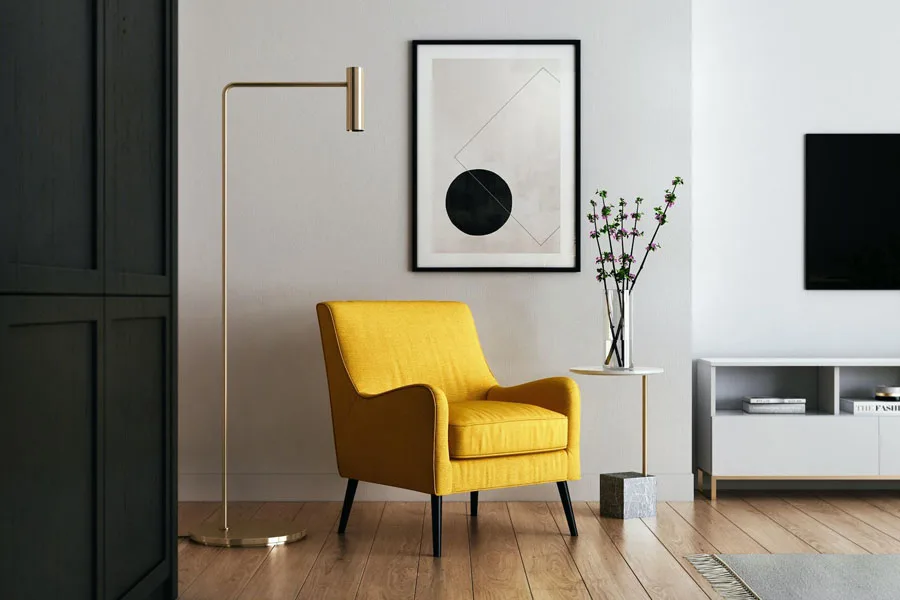
Muted color palettes are a signature aspect of Japandi style. Soft grays, earthy greens, and pastel blues create a tranquil and soothing environment. These colors work beautifully in minimalist spaces, complementing the natural materials commonly used in Japandi decor.
Businesses can align their inventories with this trend by offering items like cushions, wall art, and textiles in these understated hues. These colors not only enhance the aesthetic appeal of a space but also have a calming psychological effect, making them popular among consumers looking to create a peaceful home environment.
3. Minimalist and functional design
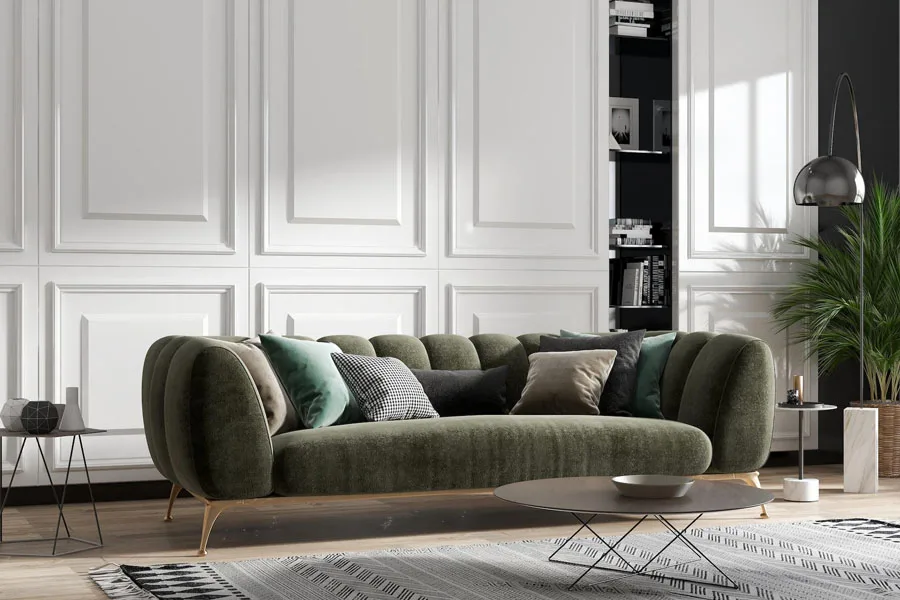
The Japandi aesthetic places a strong emphasis on minimalist yet functional designs. Furniture and decor items that are sleek yet practical are in high demand. This includes streamlined sofas, multi-functional shelves, and simple yet elegant tableware.
Sellers should focus on items that marry form and function, offering consumers the dual benefits of style and practicality. Minimalist designs also have the advantage of being timeless, ensuring longevity in the market.
4. Handcrafted and artisanal accessories
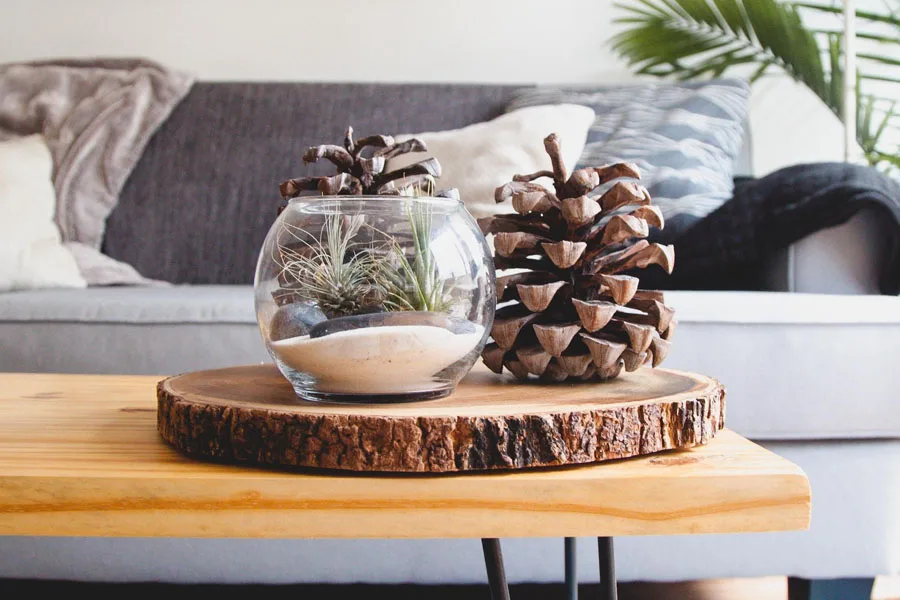
Artisanal and handcrafted accessories are a highlight in Japandi décor. Items such as pottery, textiles, and wooden crafts bring an element of uniqueness and personal touch to interiors.
For sellers, this trend means sourcing products that tell a story, crafted with skill and attention to detail. These pieces not only enhance the aesthetic but also offer consumers a sense of connection to traditional craftsmanship, aligning with the growing desire for authenticity in home decor.
According to Google Ads, this trend is a popular market niche. For instance, wood crafts recorded 60,500 average global monthly searches, while pottery had 450,000 searches in the past year.
5. Comfort-driven elements
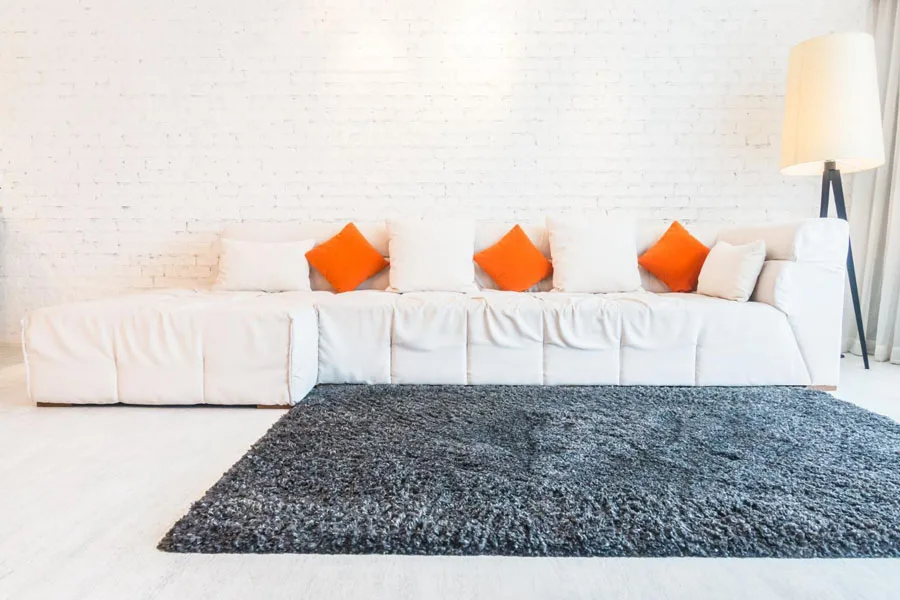
Comfort-driven elements are increasingly crucial in Japandi decor. This trend is characterized by the incorporation of plush seating options, soft rugs, and luxurious textiles, which add a layer of tactile warmth and comfort to the minimalist Japandi aesthetic. These elements blend seamlessly with the minimalist aesthetic of Japandi while offering tactile and visual warmth.
Sellers can align their stocks with this trend to provide products that enrich living spaces with both coziness and elegance.
6. Nature-inspired decor and plant elements
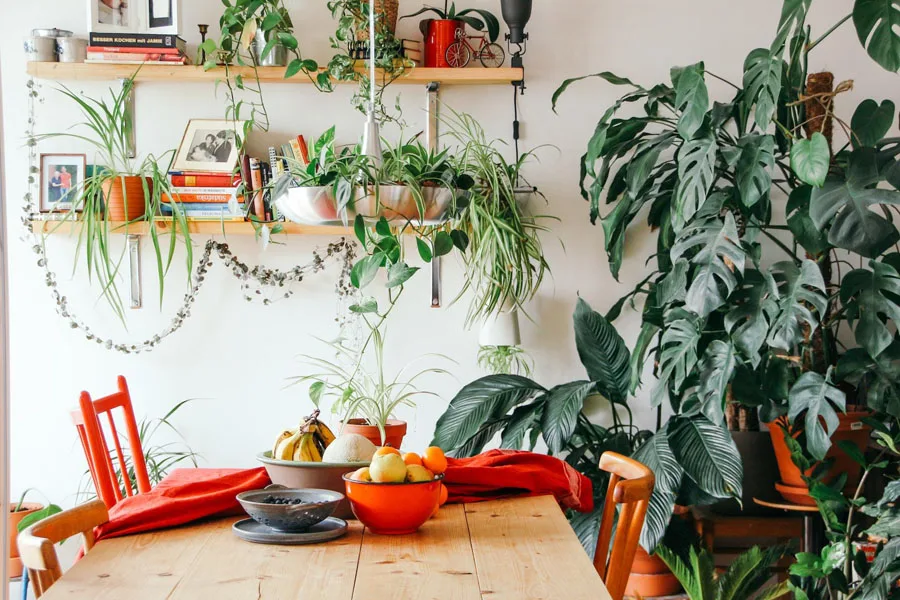
Incorporating nature and plant elements is a strong trend in Japandi decor. This includes indoor plants that bring life and freshness to spaces and botanical prints and natural motifs that offer a subtle yet effective way to weave nature’s patterns and textures into home design. These elements, aligned with the minimalist and tranquil essence of Japandi, create interiors that feel both serene and alive.
Businesses can create a bridge between the indoors and the natural world by offering customers ways to introduce biophilic design elements into their homes. This trend presents a good business opportunity, as supported by Google Ads. For example, indoor plants had 673,000 average global monthly searches in the past year.
7. Hybrid and versatile lighting solutions
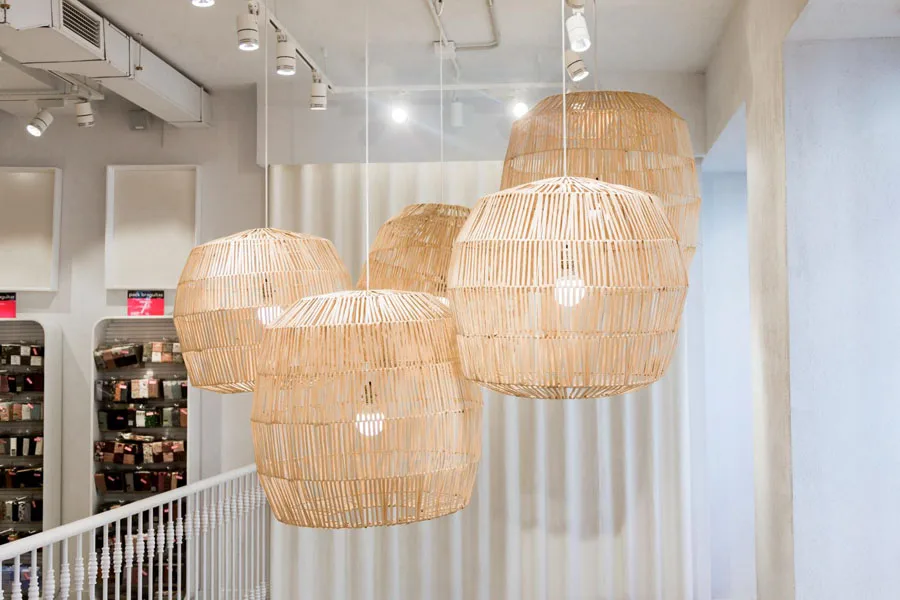
Hybrid and versatile lighting solutions are critical components of the Japandi decor trend, meeting the need for functionality while enhancing the overall aesthetic appeal. Such lighting solutions strike a balance between the minimalist elegance of Scandinavian design and the natural, subdued ethos of Japanese interiors.
Fixtures that blend materials like wood, paper, or bamboo with sleek, modern designs are particularly sought after. They offer the dual benefit of being functional—providing the right amount of illumination—and acting as statement pieces in a minimalist setting. Examples of such include bamboo pendant lights and table lamps with ceramic bases.
This trend presents a unique, popular, and growing market niche that sellers can tap into. According to Google Ads, bamboo pendant lights recorded 5,400 average global monthly searches in the last 12 months.
Conclusion
Japandi decor is poised to take a significant position in the home decor market in 2024. Characterized by its serene, nature-inspired elements and emphasis on craftsmanship and sustainability, this décor resonates well with the evolving preferences of modern consumers. Consequently, businesses have the opportunity to tap into a market that is experiencing an upsurge.
However, sellers must stay abreast of evolving trends to fully maximize. By embracing and integrating these trends into their product offerings, they can meet the needs of these contemporary consumers.
You can keep tabs on new trends and access Japandi décor on Chovm.com.




